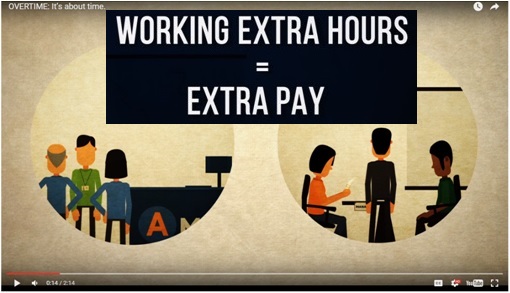Last week, I responded to a reader who wanted to know how the new overtime rules would affect him. He manages a small staff in a small company and even though he works an average of 50 hours/week he’s exempt from overtime. His salary is $37,000.
According to the DOL, the new rules “will put more money in the pockets of middle class workers – or give them more free time.” That’s the intent, but how each worker is actually affected will depend on how employers decide to apply the new rules. We discussed 3 options.
1) His company may decide they want him to continue working extra hours without overtime and choose to raise his salary to the new minimum threshold $47,476.
2) Or they may choose to start paying him overtime and keep him at the same salary.
3) Or he may get a reduction in hourly pay, so that even when paid overtime, his paycheck is the same as before.
But there are better and more likely options:
4) His employer may limit hours to 40 but shift some of the work to lesser paid staff. Paying their overtime is cheaper than paying his overtime.
Result: his workload is lighter AND he gets to go home on time.
5) Or his employer could decide that, instead of paying current employees overtime, hiring part-time help might be less costly and provide more scheduling flexibility.
Result: the team gets part-time help, the work load is spread out and everyone goes home on time. This might be one of the most cost effective options allowing employers to get the same hours of labor without paying overtime.
But let’s not kid ourselves, there’s no one-size fits all formula. How employers apply the rules will be case specific. What might be a good option for a restaurant, might not be a good option for an office of professionals. What might work for companies interested in retaining talent, may not be practical in high-turnover industries. What is constant for all employers is that they’ll have to balance the tradeoff of controlling payroll costs versus a potentially demoralized staff that’s looking for greener pastures.
The rules go into effect Dec 1, 2016 giving employers six months to prepare. More at www.dol.gov/featured/overtime
©Copyright Eva Del Rio
Eva Del Rio is creator of HR Box™ – tools for small businesses and startups. Send questions to Eva@evadelrio.com



